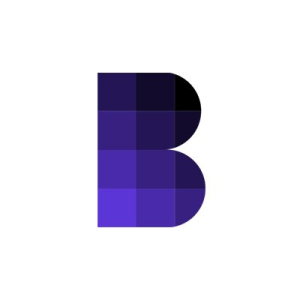Summary Bitcoin's disappointing 'Uptober' could still turn around with positive technical signals, cycle indicators, and ETF flow data suggesting potential for a year-end rally. Despite an 8% decline since September, BTC shows bullish signs, with higher lows and market sentiment indicators not reflecting the price movement. Global liquidity growth and HODLer balance trends hint at a potential BTC price surge, though retail FOMO is currently lacking. iShares Bitcoin Trust offers a low-cost, tax-advantaged way to gain Bitcoin exposure, benefiting from diminished BTC supply and fiat debasement. What the fin-fluencers online have dubbed 'Uptober' has been a disappointment to say the least. The price of Bitcoin ( BTC-USD ) has failed to sustain a meaningful rally in the month of October. Some analysts, myself included , have expected positive returns for BTC through the end of the year. Speaking to seasonality in a previous article for Seeking Alpha, I wrote the following: With an 80% win rate going back to 2014, October is historically one of the best months of the year for BTC. The mean change in the month is 19%. Q4 has generally been a good time to let BTC positions run. Alas, October has yet to yield much fruit as we approach the mid-way point of the month: Data by YCharts In fact, BTC has actually fallen by 8% since the end of September. But 'Uptober' is not over yet. There are positive signs emerging that, I think, will help propel Bitcoin higher between now and the end of the year. In this update, we'll look at technical signals, cycle indicators, and ETF flow data for the iShares Bitcoin Trust ( IBIT ). Bitcoin Technicals I don't generally make my Seeking Alpha posts about technical analysis, as I try to focus more on fundamental data. But I see several positive signs in the Bitcoin chart. First, let's examine the weekly: BTC Weekly Chart (TrendSpider) Here we see a very clear structure of lower highs and lower lows between March and early August. Notably, BTC did not revisit the top of this channel on the late-September rally. Instead, it has pulled back once again below the 8-week moving average in two consecutive weeks before reversing higher over the 20-week MA. Consider that the early-September decline made a higher low than the previous decline. At minimum, I believe this action is setting up for yet another test of the top of the trend. The daily chart also provides some interesting insight as well: BTC Daily Chart (TrendSpider) I like this one for the sentiment tell. Outside of a one-week period at the end of September, the Crypto Fear & Greed Index has remained in fear for most of the last two months, even though BTC is 27% off its August low . The price is moving higher, but market sentiment indicators don't seem to believe it. I think this is bullish. Not only do I suspect we'll see another test of the trend line from March, but I think we could even see a breakout of resistance. Cycle Indicators Bitcoiners often like to look at pricing models that attempt to gauge things like 'fair value' or cycle top signals. There are numerous such instruments, but I suspect the most important variable in determining where the price of Bitcoin is ultimately going to go is probably global liquidity. Like Gold or other assets more broadly, we've generally seen fiat currency devaluation through the years lead to higher prices for financial assets. This has been true for BTC as well. Bitcoin vs Global M2 Growth (BGeometrics) It's important to keep in mind that Bitcoin is a global phenomenon, in the same way digitally printing fiat currency is a global phenomenon. And though the rate of change is nothing like it has been in previous cycles, growth in global M2 has been on the rise again for most of the last two years. Bitcoin has accounted for much of this liquidity growth. But the parabolic move has alluded us. Right now, we’re already seeing a resurgence in global M2 growth, but the price of BTC hasn’t gone much of anywhere for 6 months. Perhaps there's a meaningful signal there. Or, perhaps, BTC is about to make up some ground. The all important HODLer balance of BTC has dripped down to 12.8 million of the 19.7 million coins in circulation. This is a decline of about 1 million BTC since the start of the year. Bitcoin HODLer Balance (IntoTheBlock) Bitcoin’s HODLer balance hasn’t been this low since Q1-23. I don’t think this is anything to be all that concerned about, to be honest. Typically, what we’ve seen historically is HODLer balance peaks somewhere before the real bull run begins. It isn’t until HODLer balance starts going back up that the price top has generally been in. As far as post-halving price performance goes, the 2024 vintage has been a massive dud to this point: Performance By Halving (IntoTheBlock) This post-halving epoch is admittedly off to a rough start. We are not currently following historical patterns from the previous three epochs. I suspect the approval of the spot ETFs changed things and pulled forward quite a bit of post-halving BTC demand. But one of the big problems for demand is we just don’t have the same level of retail mania 'FOMO' that we’ve seen in the past. If/when that happens, we generally see market prices explode as much as 10x higher than realized prices. BTC Realized Value (BitcoinMagazinePRO) That realized price level is currently $25k. To be clear, I’m not saying we see BTC take out a quarter million per coin; to the contrary, I actually think this cycle’s top is potentially going to disappoint bulls considerably without a parabolic liquidity pump from central banks. The latter of which is possible, but not something that I think investors should be banking on as a certainty just yet. The point is, if market participants see higher BTC prices in the future as a realistic bet, how does one put that trade on without directly buying the coin? iShares Bitcoin Trust As of October 9th, the iShares Bitcoin Trust is home to over 364k BTC: IBIT Holdings (The Block) IBIT is now the largest single holder of Bitcoin in the public markets. The fund almost has as much BTC under management as the Fidelity Wise Origin Bitcoin Trust ( FBTC ) and Grayscale Bitcoin Trust ETF ( GBTC ) combined. Through IBIT, BlackRock ( BLK ) now controls more Bitcoin than MicroStrategy ( MSTR ), Marathon Digital ( MARA ), Riot Platforms ( RIOT ), and every other public company combined through official balance sheet holdings. IBIT Daily Flows (TheBlock) The 'fee flight' from Grayscale's flagship fund has been well documented at this point. BlackRock's fund has clearly been a large beneficiary of that GBTC outflow. However, even now, with the fee flight story slowing down, IBIT's daily asset flow has very rarely been negative going back to January inception. And there's a good reason for this. The fund's expense ratio is among the lowest in the market at 0.25%. And BlackRock's reputation as a fund manager has perhaps given Bitcoin some level of credence for more traditional investors who would otherwise avoid digital assets altogether. Closing Remarks I believe Bitcoin bulls are going to enjoy Q4-24. 'Uptober' may not have started the way many believed it would, but I don't think that means it's going to end badly. There are positive signs both in the technicals and in some of the cycle data. Fundamentally, Bitcoin continues to have the same setup that has propelled it higher so many times before; diminishing BTC supply and perpetual fiat debasement. In a world with higher BTC prices, IBIT will generate handsome returns. It's among the lowest-cost spot products and remains a more than suitable way to get exposed to Bitcoin through a tax-advantaged traditional investment account.













